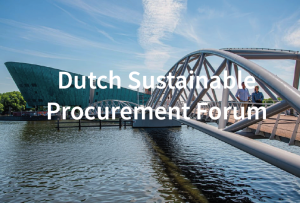Systematic Supplier Management as a Performance Factor
Systematic supplier management is becoming increasingly important in medium-sized companies. The reasons for this lie in a permanently distributed as well as integrated value creation across companies and an increasingly decreasing depth of value creation. The ongoing digitization of business processes in the wake of the Corona crisis has additionally pushed the demand for integrated supplier solutions.

In addition to increased dependency in ensuring security of supply, the right make-or-buy strategy and selection of business partners ensures decisive competitive advantages through the targeted use of innovative strength and competitive cost structures. Above all, transparent dealings with each other are crucial for successful supplier management. The performance of the supply chain depends not only on the companies involved alone, but above all on the performance of the interfaces of cross-company value creation in the source-to-pay process.
The year 2020 and the accompanying effects of Covid-19 that continue to surround us have once again highlighted the need for digitization of business processes in many companies. However, while this topic has been driven through many business rooms in recent years, concrete measures for strategy formulation and implementation have fallen by the wayside. However, due to the necessary physical distance of employees, companies were forced to think about internal company processes and their possible transformation from one moment to the next. This is just as crucial when it comes to cross-company value creation processes, as these are becoming increasingly important for business success. Likewise, the planned Due Diligence Act of the Federal Republic of Germany as well as the additionally planned directive proposal of the EU Commission on the Supply Chain Act ensures further obligations of companies to observe human rights and environmental due diligence obligations in their supply chains.
The life cycle of supplier relationships
Supplier management has undergone a transformation in recent decades. Whereas in the 1980s the procurement focus was still on buying at the lowest possible prices, today an understanding of the interrelationships between price, quality and innovative strength, as well as sustainability, has become established in purchasing departments. Accordingly, the goal of companies is to reduce the total cost of ownership instead of a unit price. In order to achieve this, however, the requirements for the selection of suppliers and their weighting must be established. A common understanding of cross-company processes, the design of a uniform process organization in the areas of planning, procurement, production, delivery, service and disposal, and the evaluation of performance creates the necessary clarity for both business partners with regard to target tracking and the added value of a collaboration. In addition, information technology and the maturity of a supplier are playing an increasing role in this area.
However, in order to ensure that the value contribution from the business relationship is not only increased during supplier selection, but that the performance of suppliers is reviewed over the entire life cycle and optimized through targeted measures, or that more suitable suppliers have to be found in the meantime for the achievement of corporate goals or specific procurement tasks, a complete information base is required.
Company and procurement strategy as context
A supplier strategy should always be formulated in the context of the enterprise strategy. The company’s procurement and sales markets, the make-or-buy strategy for the company’s material groups, and general risk management (e.g. single source vs. multi-source) must be included in the considerations. This context also forms the cornerstones in the agreement of common goals with suppliers as well as within controlling with regard to their achievement.
Integrated master data management in distributed system landscapes
Companies struggle with the implementation of systematic supplier management in distributed system landscapes. It often happens that new business partners as well as changes to the data of existing suppliers are initiated via a wide variety of systems. However, one basis for smooth collaboration in the source-to-pay processes between buy-side and sell-side is the use of always up-to-date and accurate master data. It is essential that a supplier relationship management (SRM) solution supports different input channels and their specific handling with regard to supplier approval and master data changes for existing suppliers, as well as returning such changes to the distributed systems. Likewise, data management should represent a cross-company integrated discipline in which the business partners themselves can maintain and provide master data. This unified management of data, or “data governance” for short, is becoming increasingly popular in digitized business processes, as defects in master data objects harbor dangers. For example, the transactions based on them can multiply and the desired automation of recurring processes does not succeed. It is also important that the data model supports a certain degree of flexibility in terms of data characteristics for different organizational units. This includes, for example, different delivery and payment terms of a company depending on the organizational unit or different release levels and usage authorizations.
Finding and winning new suppliers
Finding and winning new suppliers does not always have to come from a company’s purchasing or development department alone. Procurement organizations should also attract the attention of potential suppliers through a targeted communication policy and thereby encourage suppliers to apply there as potential new business partners. It should be possible to separate the wheat from the chaff as quickly and efficiently as possible and thus distinguish relevant from unsuitable suppliers. An application process for suppliers that is integrated into the SRM solution is advantageous because, based on standardized and material group-specific questionnaires as well as requested documents and proofs, not only can the fulfillment of specifications be checked automatically, but the entire process can also be tracked transparently and stakeholders can be involved as needed via appropriate notifications.
Qualification of potential suppliers
Once a new potential supplier has been accepted, its potential performance and compliance with defined specifications must be determined in order to establish whether and, if so, for which offered services this company is technically and commercially qualified. To this end, detailed and usually material group-specific information is obtained based on the supplier information provided in an application and, for existing suppliers, based on available information. If a potential supplier meets the criteria and provides the required information, he is approved for certain processes such as tenders, contracts or specific orders, depending on the company. Often, a qualification is also limited in time and the expiration of the qualification leads to a requalification or even to a downgrading of the supplier’s release.
Classification of released suppliers
The classification of suppliers does not only have an informal role. This point is about categorizing suppliers for their use in the company or company units. For example, it can be used to determine whether they are approved for tenders, auctions, purchase orders or contracts. It also includes the release of suppliers for cooperation in certain material groups. This results in a matrix of released business processes and material groups. Such releases should also be linked by the SRM system to corresponding approval processes, e.g., to enable a dual control principle or to involve different approvers in the supplier process in accordance with the audit, depending on material group experts.
Supplier Performance Management
Once new business partners have been approved for a specific type of collaboration, their performance must be evaluated on an ad hoc and scheduled basis. A distinction is made here between qualitative and quantitative criteria. Quantitative criteria relate, for example, to the measurement of on-time delivery, quantity reliability or the quality of the products supplied, while qualitative criteria use internal surveys to assess perceptions of, for example, the quality of a supplier’s customer service or complaints handling. Transparent dealings with one another are important for a good partnership. For example, the KPIs relevant for a supplier evaluation should be coordinated with each other at an early stage. This enables suppliers to take the necessary internal measures on the one hand and also make recommendations for KPIs related to the type, scope and objective of the collaboration on the other.
Systematic supplier management with the right partner
In view of many obvious advantages of systematic supplier management, the question arises why many companies still do not have an integrated supplier relationship management solution. Complex system landscapes and the associated fears about technical compatibility often deter companies from implementing them. Expected efforts in the implementation and later administration of such a solution can be easily overcome if companies rely on the right partner.
Onventis has been a cloud pioneer for the digital transformation of purchasing and finance processes since 2000. Onventis Buyer cloud software is an all-in-one procurement system that helps companies across all procurement operations to achieve financial control, process efficiencies and cost savings while complying with corporate policies and laws. Onventis Buyer streamlines and automates all processes from procurement source to payment, including collaboration with suppliers in the network. The Onventis network connects business processes of buyers and suppliers – easily and securely. Worldwide, more than 1,000 companies with approximately 450,000 users in the Onventis network handle an annual procurement volume of more than 10 billion euros with more than 50,000 suppliers.
Would you like to learn more about integrated master data management for suppliers? Then click now into our live recordings on supplier management from March 24 and 26, 2021. In the recording, you will see the innovations in master data management and diverse possibilities of the new supplier approval workflows. You will learn how collaborative master data management via a network massively reduces internal efforts and at the same time increases the topicality of master data used.
Weitere BlogsMore BlogsMeer blogs



